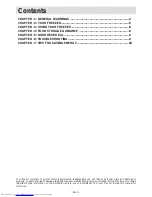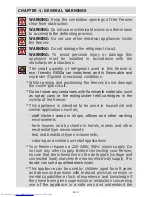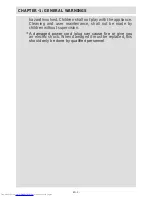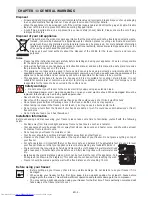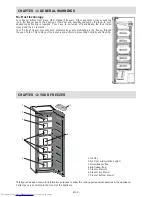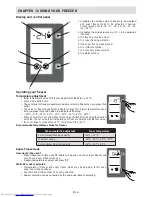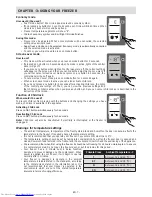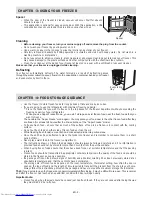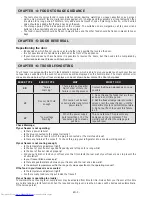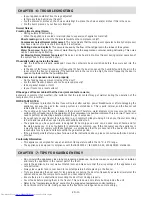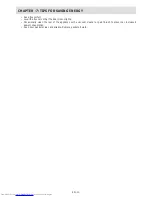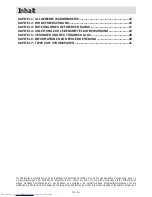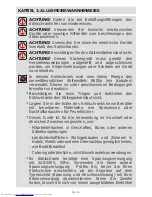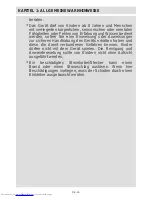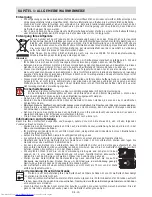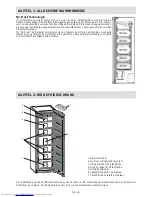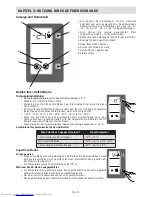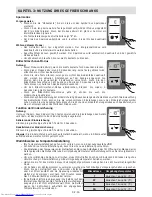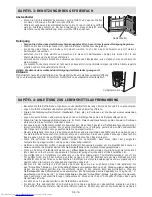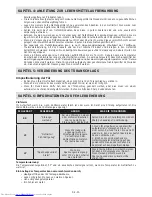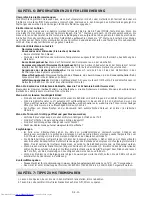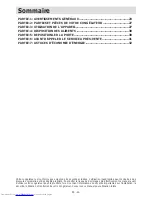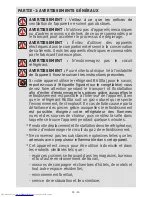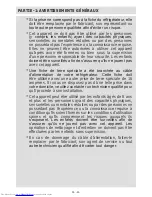
EN -10-
CHAPTER -6: TROUBLESHOOTING
•
Is your appliance stable? Are the legs adjusted?
•
Is there anything behind your freezer?
•
Are the shelves or dishes on the shelves vibrating? Re-place the shelves and/or dishes if this is the case.
•
Are the items placed on your freezer vibrating?
Normal Noises;
Cracking (Ice cracking) Noise:
•
During automatic defrosting.
•
When the appliance is cooled or warmed (due to expansion of appliance material).
Short cracking:
Heard when the thermostat switches the compressor on/off.
Compressor noise (Normal motor noise):
This noise means that the compressor operates normally Compressor
may cause more noise for a short time when it is activated.
Bubbling noise and splash:
This noise is caused by the flow of the refrigerant in the tubes of the system.
Water flow noise:
Normal flow noise of water flowing to the evaporation container during defrosting. This noise
can be heard during defrosting.
Air Blowing Noise (Normal fan noise):
This noise can be heard in No-Frost freezer during normal operation of
the system due to the circulation of air.
If humidity builds up inside the freezer;
•
Has the food been properly packaged? Have the containers been well dried before they were put into the
freezer?
•
Is the door of the freezer opened very frequently? When the door is opened, the humidity found in the air in the
room enters the freezer. Especially if the humidity rate in the room is too high, the more frequently the door is
opened the faster will be the humidification.
If the doors are not opened and closed properly;
•
Do the food packages prevent closing of the door?
•
Are the door freezer, baskets and Ice box placed properly?
•
Is door gasket broken or torn?
•
Is your freezer on a level surface?
If the edges of freezer cabinet that the door joint contact are warm;
Especially in summer (hot weather), the surfaces that the joint contact may get warmer during the operation of the
compressor, this is normal.
IMPORTANT NOTES:
•
The compressor protection thermal fuse will cutout after sudden power breakdowns or after unplugging the
appliance, because the gas in the cooling system is not stabilised. This is quite normal, and the freezer will
restart after 4 or 5 minutes.
•
The cooling unit of your freezer is hidden in the rear wall. Therefore, water droplets or ice may occur on the rear
surface of your freezer due to the operation of the compressor in specified intervals. This is normal. There is no
need to perform a defrosting operation unless the ice is excessive.
•
If you will not use your freezer for a long time (e.g. in summer holidays) unplug it. Clean your freezer according
to Part 4 and leave the door open to prevent humidity and smell.
•
The appliance you have purchased is designed for home type use and can be used only at home and for
the stated purposes. It is not suitable for commercial or common use. If the consumer use the appliance in
a way that does not comply with these features, we emphasise that the producer and the dealer shall not be
responsible for any repair and failure within the guarantee period.
•
If the problem persists after you have followed all the instructions above, please consult an authorised service
provider.
Conformity Information
•
This appliance is designed for use at an ambient tem-perature within the 16°C - 43°C range.
•
The appliance is designed in compliance with the IEC60335-1 / IEC60335-2-24, 2004/108/EC standards.
CHAPTER -7: TIPS FOR SAVING ENERGY
• Do not install the appliance close to heat producing appliances. Such as cooker, oven, dishwaher or radiator,
and locate the appliance in the coolest part of the room.
•
Locate the appliance ina cool well ventilated room and make sure that the air openings of the appliances are
not obstructed.
•
Always leave warm food to cool down to room temperature before placing in the freezer.
•
Try to avoid keeping the door open for long periods or opening the door too frequently as warm air will enter the
cabinet and cause the compresor to switch on unnecessarily often.
•
Ensure there are no obstructions preventing the door from closing properly.
•
Cover foods before placing them in the freezer. This cuts down on moisture build-up inside the unit.
• Refer to the “temperature settings” section for the suggested temperature control settings.
•
Do not block cold air vents. Doing so causes the freezer to run longer and use more energy.


